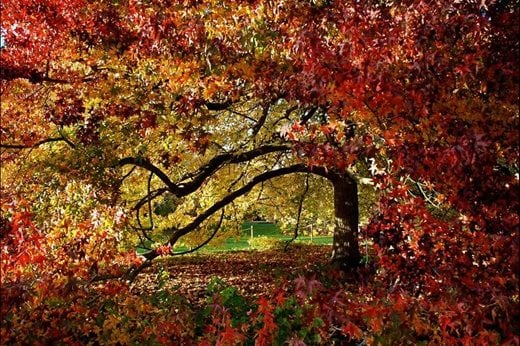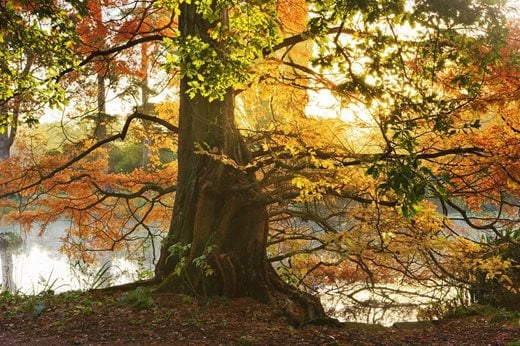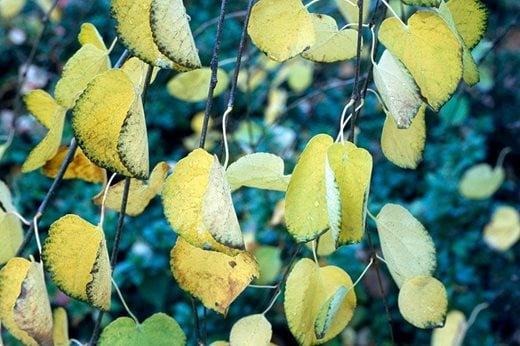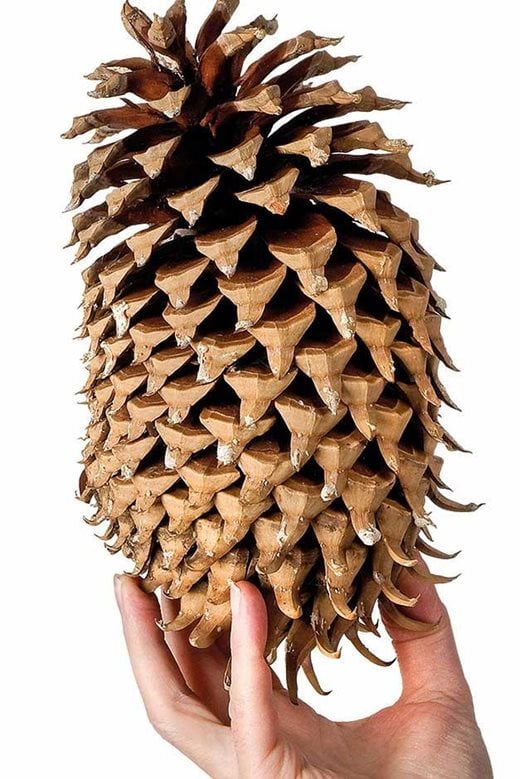Horticulturists Ian Tocher and Raul Conde Vila introduce some of their favourite plants at Wisley
With just over 25,000 plant taxa - different species or cultivars - at Wisley, it’s hard to select favourites. Of course every visitor will have their own preferences, but here are some favourites selected by horticulturists Ian Tocher and Raul Conde Vila. In future we hope to include some of these in a new plantsman's trail around the garden.
 Liquidambar styraciflua
Liquidambar styraciflua
The sweet gum is unbeatable in autumn, when the foliage turns from shiny green to fiery red, sometimes even crimson. To perform, it needs an open position in full sun, especially during the autumn months. It also appreciates regular watering during summer. It grows much larger than Japanese maples, easily reaching 20m.
Where to see: Wild at Wisley play area.
 Metasequoia glyptostroboides
Metasequoia glyptostroboides
A tall conifer with soft needles that turn dark red. The bigger the tree the more stunning the impact - especially when seen from a distance. Cultivars like ‘Golden Dawn’ and ‘Schirrmann’s Nordlicht’ present variations in the colour of the foliage to make for even showier, diverse displays.
Where to see: Wilson's Wood and Seven Acres Lake.
 Cercidiphyllum japonicum 'Pendulum'
Cercidiphyllum japonicum 'Pendulum'
A less known cultivar of the popular katsura tree, retaining all the good foliage characteristics but with a cascading habit. The leaves have a sweet toffee-like scent, especially in autumn when they carpet the ground.
Where to see: Battleston Hill east side.
Magnificent conifers
 On the edge of the Trials Field is a fine example of a Coulter’s pine (Pinus coulteri; pictured right), a Californian native which can grow to 24m in the wild.
On the edge of the Trials Field is a fine example of a Coulter’s pine (Pinus coulteri; pictured right), a Californian native which can grow to 24m in the wild.
Known as the big cone pine, its distinguishing feature is the huge, heavy cones armed with spikes, which can be up to 35cm long and weigh up to 2kg! Named after Irish botanist Thomas Coulter, who discovered it in 1832, it was introduced to Britain that year by plant hunter David Douglas.
Also on the edge of the Trials Field are some giant redwoods (Sequoiadendron giganteum AGM). Native to California, they grow on the western slopes of the Sierra Nevada mountain range and can live for over 3,000 years. Introduced into the UK by plant collector William Lobb in 1853, this tree is quite often seen in country estates and large gardens.
Their reddish spongy bark is 30 to 60cm thick, which protects them from forest fires in the wild. Planted in the early 1900s, these are some of the finest of their type in the garden. The tree has the Award of Garden Merit, which was awarded after round table discussions by experts in 1993.
Where to see: Trials Field edge.

